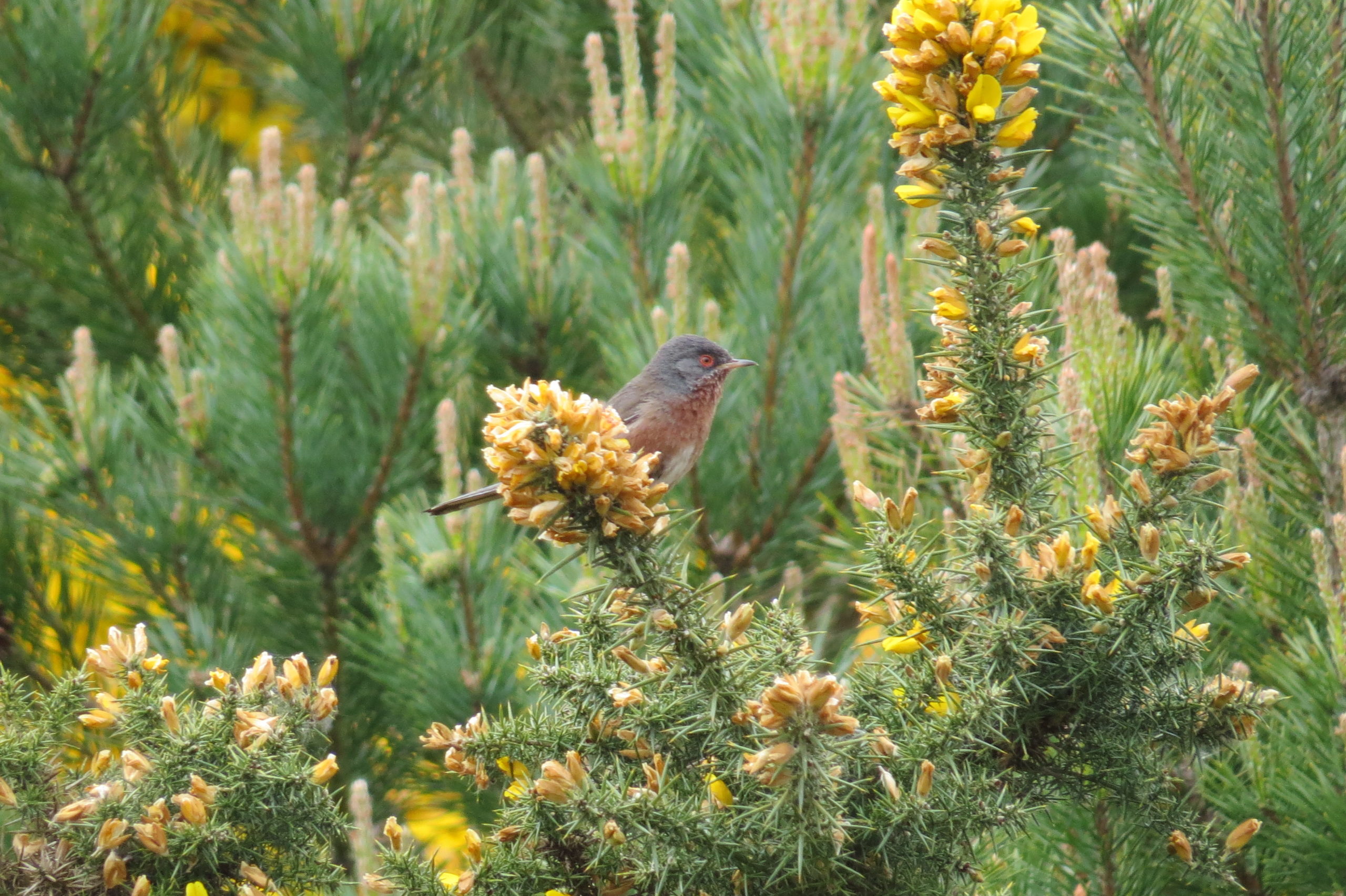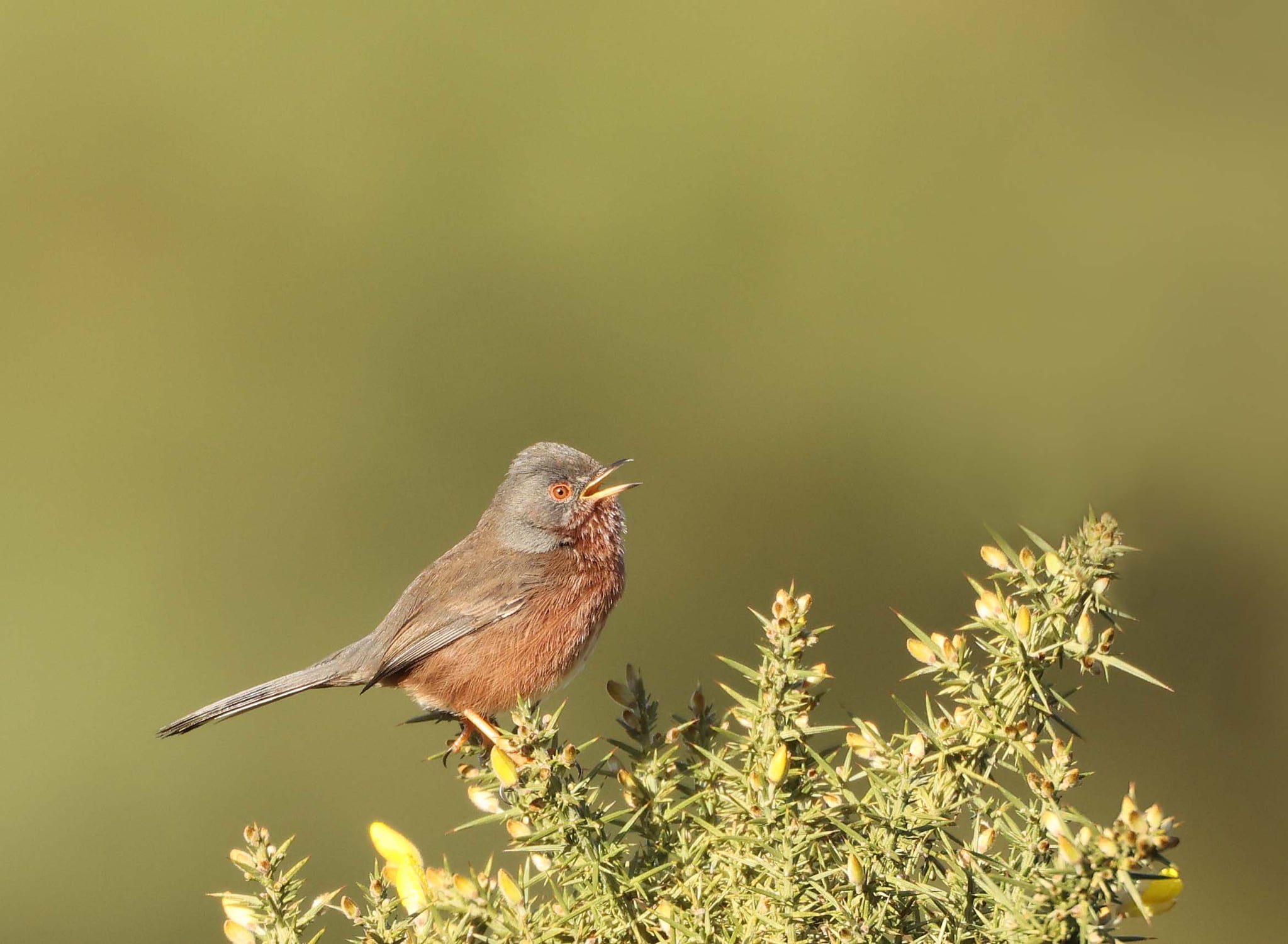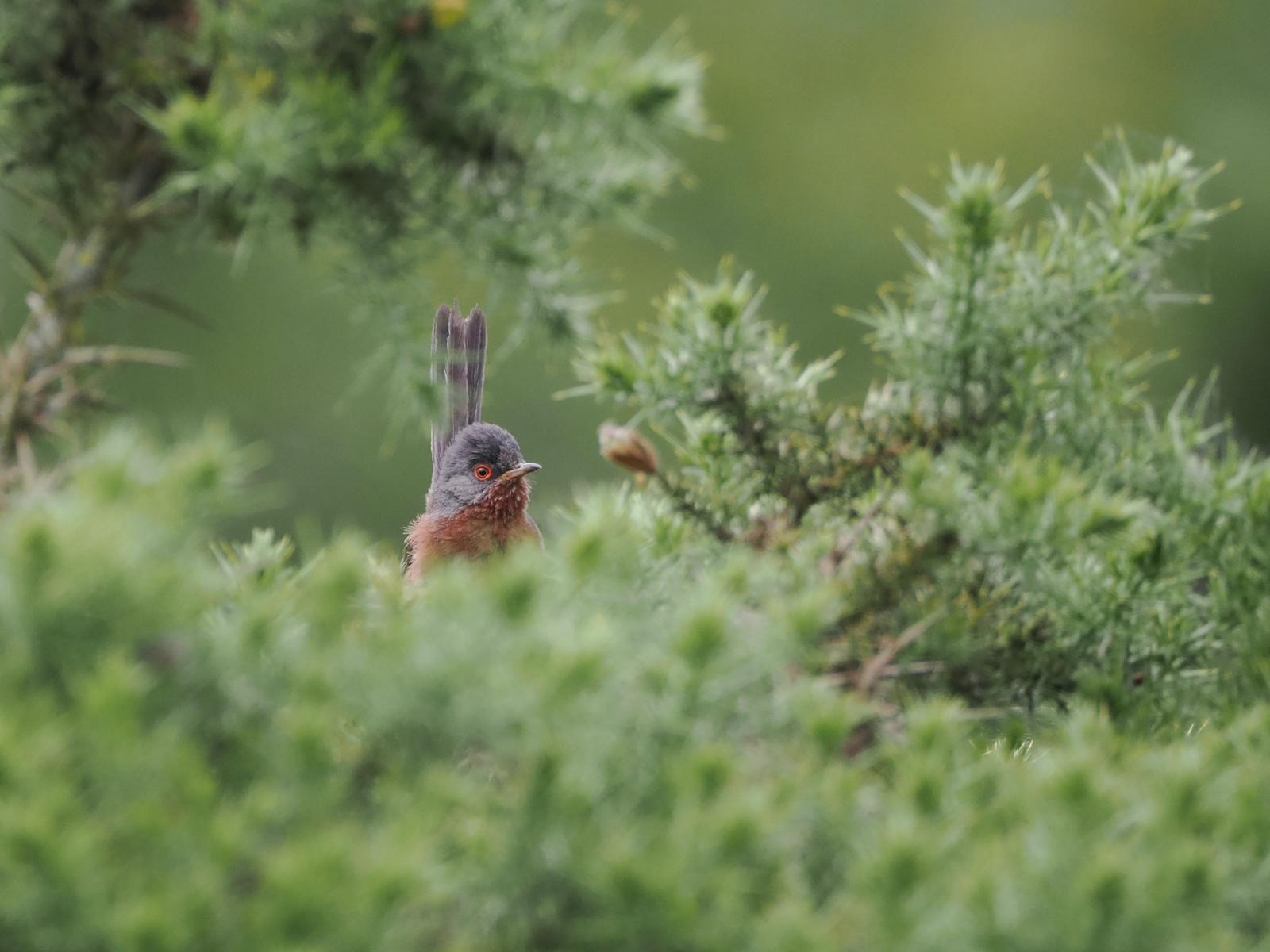Diary of a ‘Dartie’!
At this point in ground-nesting bird season, we usually have a strong focus on Nightjars. With there being a short window of time to talk about one of our favourite ground-nesters, they do seem to hog the limelight!
So let’s turn the focus back to the birds we fondly refer to as ‘Darties’ – Dartford Warblers.
They may be resident all year round, but we never tire of seeing or hearing them. Picture summer on our Thames Basin Heaths and you’ll visualise these small brown birds flitting from one gorse bush to another, characteristic long tail flicking. To me, their scratchy song almost sounds as though they’re having a good old gossip!

Credit: Michael Jones
But what more detailed information do we know about their behaviour?
Despite being elusive, Dartford’s do make themselves apparent, sometimes singing in the open on the top of a gorse bush and also ‘sky dancing’. That’s when the male displays by flying vertically into the air and dancing up and down to attract a mate. These are loyal birds, with mating pairs usually remaining together and maintaining their territory for life!

Credit: Mark Leitch
Both males and females participate in creating a home (nest building), usually in low gorse, particularly in gorse growing in mature heather. The spiky gorse probably helps to protect the nest from some predators although some nests are also built in heather.
The pair has 3-5 eggs and both parents incubate them although the female does more of the work, particularly sitting on the nest during the night. Both parents collect food for the young although in this case the male probably does most of the fetching and carrying!
The young leave the nest after around 12 days although they can leave earlier if disturbed. They are tended by the adults for several days before becoming independent. During this period it’s likely the young will call, begging for food and parents are likely to keep an eye open for danger (predators) and call to warn their ‘babies’!

Credit: Michael Jones
We’re keeping our fingers crossed that first (and potentially second) nests have been successful so far this year. Third broods are possible before the end of the breeding season in mid-September.
Thank you to the Special Protection Area bird surveyors that monitor bird territories and to John Eyre for providing these personal observations of our fabulous Darties.
Nicky, Communications Officer.
Thames Basin Heaths Partnership
